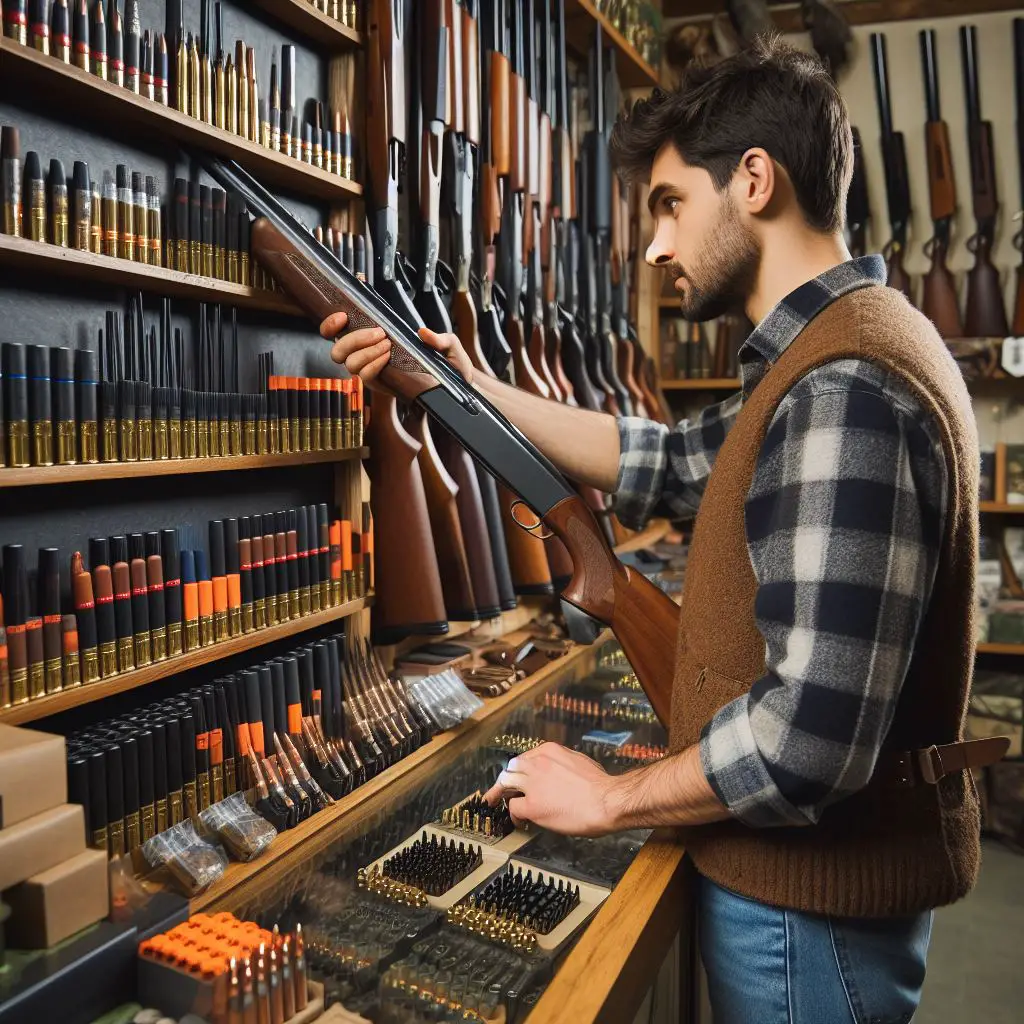Deer hunting is a beloved tradition for millions of hunters across North America. With the right preparation and equipment, it can lead to an exciting and rewarding experience in the great outdoors. However, one of the most critical elements for a successful deer hunt is choosing the right ammunition.
Selecting the best ammo for deer hunting requires careful consideration of several factors. These include the deer species you’ll be targeting, your hunting environment, local regulations, and the specific features of different bullets and cartridges. Taking the time to research and test different options will help ensure you bring home a prize buck this season.
In this comprehensive guide, we’ll cover everything you need to know about picking the ideal deer hunting ammo:
Table of Contents
- Bullet Types and Features
- Caliber Considerations
- Top Deer Hunting Cartridges
- Bullet Weights and Construction
- Specialty Ammo Options
- Regulations and Restrictions
- Testing and Sight-In Your Ammo
- Cartridge and Bullet Selection by Deer Species
- Shot Placement Considerations by Ammo Type
- Final Tips for Choosing Deer Ammo
Bullet Types and Key Features
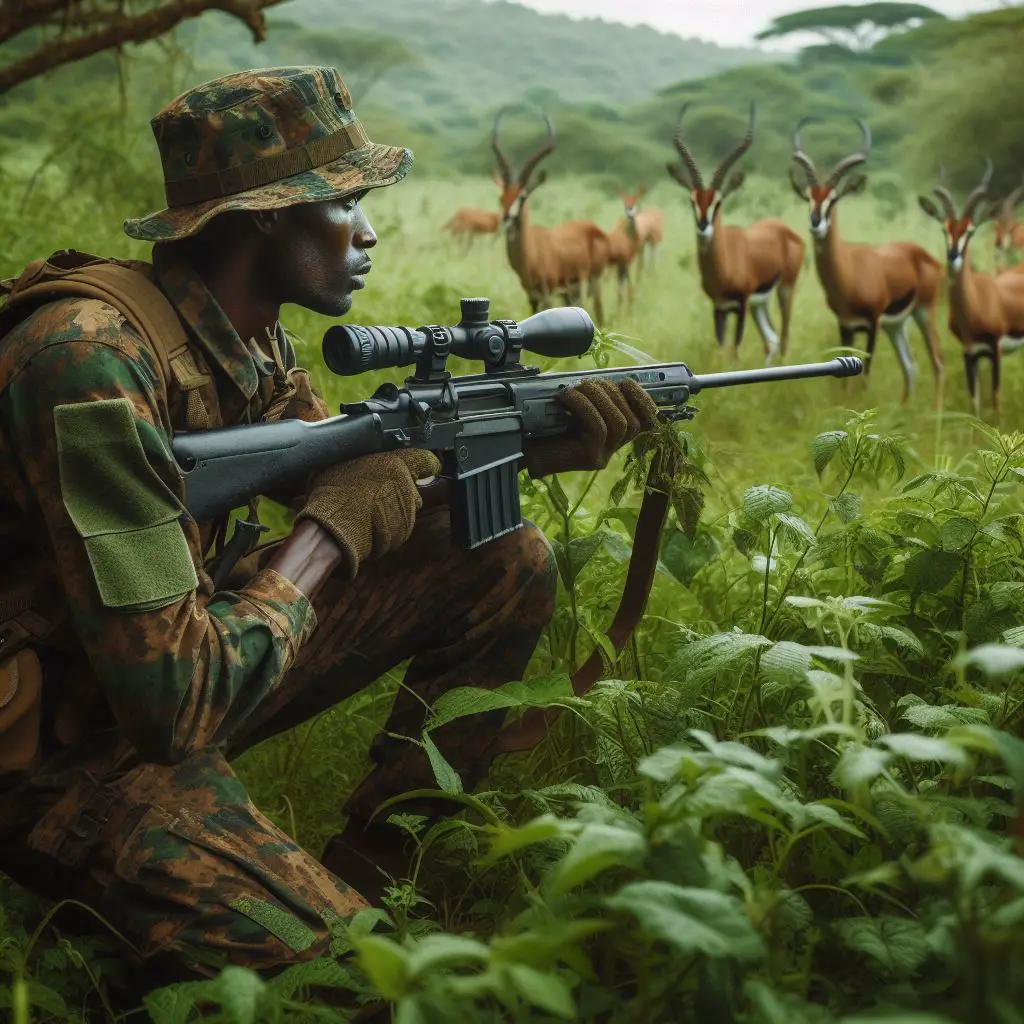
The first step is gaining a solid understanding of the different bullet options and their characteristics. Here are the main types of bullets used for deer hunting:
Soft Point and Hollow Point
- Feature an exposed lead core that expands upon impact for lethal energy transfer
- Very effective for deer hunting at short to moderate ranges
- Provide excellent expansion and penetration
- Popular choices include Remington Core-Lokt and Winchester Power-Point
Full Metal Jacket
- Enclosed by a copper jacket with no exposed lead
- Retains its shape and penetrates deeply with less expansion
- Used for long-range shots or greater penetration on large-boned deer
- Not legal in some states due to limited expansion
Ballistic Tip
- Polymer or metal tip bonded to a lead core bullet
- Provides very accurate, aerodynamic long-range performance
- Expands reliably like soft points with deep penetration potential
- Excellent choices like Nosler Ballistic Tip and Hornady SST
Copper Solid or Monolithic
- Made from solid copper or alloy with no lead core
- Provides controlled expansion and deep penetration
- Lead-free, so suitable for hunting in restricted areas
- Brands like Barnes and Federal offer all-copper bullets
Lead-Free Frangible
- Made from compressed copper powder not lead
- Designed to fragment significantly upon impact
- Used mainly for hunting in areas prohibiting lead ammo
- Typically provide minimal penetration on deer
As you can see, there are a few main options when it comes to bullet construction. Lead soft point and hollow point loads are classics for deer, providing excellent terminal performance. But modern options like ballistic tips and all-copper bullets also work very well.
You’ll also want to consider bullet weight, which has a major influence on penetration and expansion. We’ll dig into recommended bullet weights later on. First, let’s look at some top deer hunting cartridge options.
Top Deer Hunting Cartridges
The cartridge you choose is also a key factor, as this determines bullet size, velocity, and ballistic performance. Here are some of the most popular and effective calibers for bringing down whitetails and other deer:
.30-30 Winchester
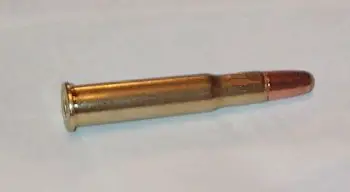
- A classic American lever-action cartridge used for over a century
- Moderate velocity and excellent terminal ballistics at short range
- Ideally suited for shots within 150 yards in thick brush and woodlands
.30-06 Springfield
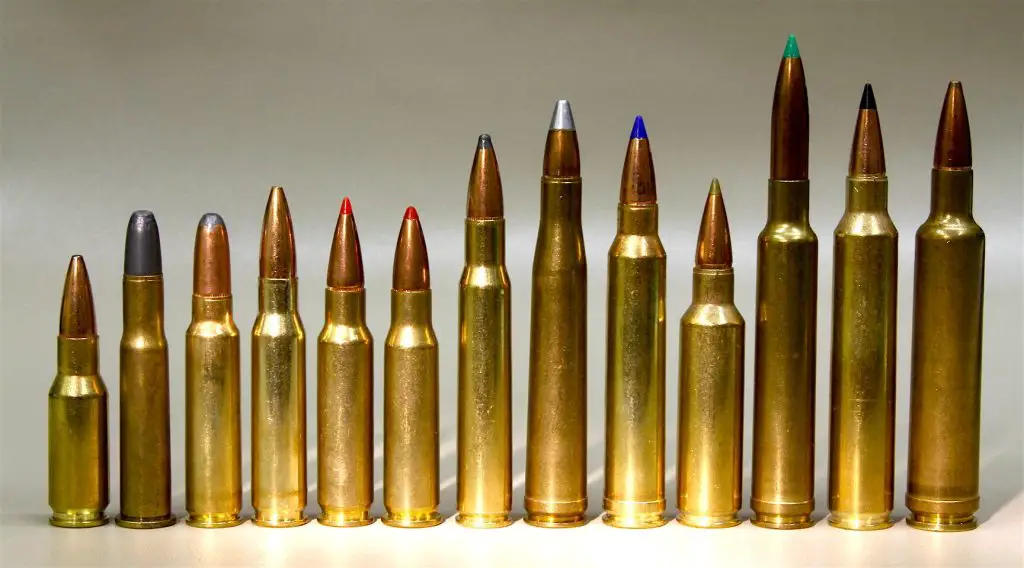
- One of the most versatile big game cartridges ever designed
- Provides excellent accuracy and stopping power past 300 yards in skilled hands
- A great all-around choice for open terrain and longer shots
.308 Winchester

- Similar ballistics to 30-06 in a short action platform
- Light recoil and highly accurate with good ammo out to 300 yards
- Perfect for deer hunting in dense forests or terrain with shorter visibility
7mm Remington Magnum

- Delivers excellent penetration and flat trajectories for longer shots
- Ideal for open country hunts out to 300-400 yards on deer
- Recoil can be stout, so best suited to heavier rifles
6.5 Creedmoor

- Gaining huge popularity due to very flat shooting ballistics
- Extends ethical shot opportunities past 500 yards for precise shooters
- Lower recoil than traditional magnum cartridges
.450 Bushmaster
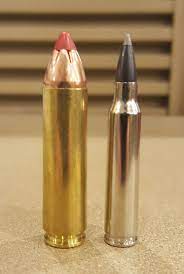
- Designed for hunting deer in areas limiting magazine capacity
- Heavy bullets provide excellent penetration at short range in thick brush
- Limited to about 150 yard effective range
There are also effective lighter cartridges like the .243 Winchester and larger heavies like the .338 Winchester Magnum. But the calibers above are some of the most proven and versatile choices across North America for reliable performance on deer.
Bullet Weights and Construction

Even within a given cartridge, you can choose from a range of bullet weights, which significantly impacts downrange performance.
Heavier bullets typically retain energy and penetrate further through an animal’s hide, bones, and vitals. They are less prone to deflection from twigs and light brush. This makes heavier weights a better choice for larger bodied deer at longer ranges or in denser cover.
Lighter bullets trade some penetration for flatter trajectories and higher velocities. This allows very accurate shot placement on deer, but may not penetrate as deep through heavier bone and muscle. Lightweights work best on smaller deer at moderate ranges in open terrain.
Weight
For most popular deer hunting cartridges, bullet weights between 120 to 180 grains are ideal for balancing penetration and expansion. Certain specialty loads go lighter or heavier.
Let’s look at some recommended deer hunting bullet weights for common calibers:
- .308 Winchester – 150 to 165 grain is a great sweet spot for most hunting situations. Try a 170+ grain for elk or moose.
- .30-06 Springfield – 165 to 180 grain bullets handle whitetails and mule deer well. Up to 220 grain for larger game like elk.
- .270 Winchester – 130 to 150 grain bullets offer versatility for medium game like deer. Avoid lightweight 110-120 grain loads.
- 7mm Remington Magnum – 160 to 175 grain bullets balance penetration and expansion. Heavier 185 grain loads maximize penetration.
- 6.5 Creedmoor – 120 to 142 grain bullets excel due to the high velocities. Avoid lighter weight varmit loads.
- .450 Bushmaster – 250 to 300 grain bullets recommended for straight-on shots at short range. Significant bullet drop beyond 125 yards.
Match the bullet weight carefully to your specific deer hunting scenario. Heavier bullets also work better for larger-bodied mature bucks versus smaller does.
For caliber selection, medium bores from 6mm to .338 typically serve most deer hunters well. The difference comes down to preferred rifle platform, trajectory, and recoil. No single “perfect” deer caliber exists.
Once you choose your cartridge and bullet weight, pick a quality expanding bullet from a trusted manufacturer like Hornady, Federal, Nosler, or Barnes. With a proper bullet, shot placement becomes the most important factor.
Specialty Ammo Options
In addition to traditional expanding bullets, there are a few specialty ammo choices that some deer hunters prefer:
Buckshot or Slugs
- Used for very heavy brush and short range shots with shotguns
- Provide more wiggle room for shot placement at close range
- Effective out to 50 yards with proper patterning from a choked barrel
Muzzleloader Loads
- Black powder substitute pellets and saboted bullets
- Used during muzzleloader-only seasons in many areas
- Accurate and hard-hitting sabots extend rifle-like shot opportunities
Solid Copper Bullets
- Lead-free copper bullets for hunting in restricted areas
- Provide controlled expansion and deep penetration
- Brands like Barnes TTSX are completely lead-free
Long Range Loads
- Tailored for precision shooting at extended distances
- Utilize high ballistic coefficient match-grade bullets
- Cartridges like 6.5 Creedmoor and .300 Win Mag shine here
While most deer hunters use standard soft point or hollow point loads, it’s good to know your options. Test any specialty ammo thoroughly before relying on it in the field.
Regulations and Restrictions
One factor that can significantly limit your ammunition choices is local regulations. Many states and hunting areas prohibit certain cartridge types, bullet materials, or other features:
- Straight-walled rifle cartridge requirements – For shooting in shotgun-only areas
- Minimum bullet weights – For adequate penetration on big game
- No full metal jacket bullets – Due to limited expansion
- Lead-free zone requirements – For environmentally sensitive areas
- Maximum magazine capacity limits – Inplace of statewide restrictions
Always review the local hunting laws thoroughly before the season. Regulations sometimes change from year to year, so an update is worthwhile.
Illegal ammo can lead to a hefty fine or loss of hunting privileges if you are caught using prohibited loads. It’s your responsibility to know the rules and hunt ethically and legally at all times.
Sight-In and Test Your Hunting Ammo

An often overlooked but critical step is properly sighting in your rifle with your chosen deer ammo before hunting season. No two loads will shoot exactly the same from your gun due to variance in bullet weight, velocity, etc.
Take the time to:
- Sight-in your scoped rifle at the range with your selected deer ammo at your planned hunting distances. 100 yards is standard for most calibers, with somesighted at 200 yards.
- Make sure your rifle consistently groups 3 shots within a 2-inch circle at your zero distance. This confirms the ammo is sufficiently accurate for clean kills.
- For longer range shots, consider a 200 or 300 yard zero to allow holdovers at further distances. Test various bullet trajectories.
- Use a solid shooting rest and fire from the positions you expect to use in the field – sitting, kneeling, etc.
- Sight-in and practice with any backup rifles or scopes as well. Don’t assume they will hit the same.
- Confirm your trajectory data correlates to published ballistics. Print a reference card to carry.
Taking this extra time at the range gives you confidence in your equipment and chosen deer ammo when hunting season comes. Don’t cut corners here.
Matching Ammo to Deer Species
North America is home to different deer species, from the massive moose to the small Key deer. The right ammo choice depends partly on the deer you are hunting.
White-Tailed Deer
The most popular big game animal across the eastern US.
- Typical mature bucks weigh 150-300 pounds
- Moderate bone structure and muscle mass
- Excellent cartridges include .308 Win, 30-06, 6.5 Creedmoor
- Bullets from 150 to 165 grain cover most hunting scenarios
Mule Deer
The largest deer species in western states.
- Mature bucks average 200-300 pounds
- Heavier bone structure than whitetails
- Harder to bring down with marginal hits
- Good cartridges are .270 Win, 7mm Rem Mag, and .300 Win Mag
- 160 to 180 grain bullets provide penetration on big muleys
Black-Tailed Deer
A smaller subspecies of mule deer found along the Pacific coast.
- Adults weigh 90-150 pounds typically
- Lighter bone structure similar to whitetails
- Well suited to standard deer cartridges and bullets
- The .308 Win and 6.5 Creedmoor work excellently here
Moose
The giant of North America, the largest deer species.
- Bulls weigh up to 1500 pounds
- Very thick hide and heavy bone require controlled expansion bullets
- Recommended cartridges are .300 Win Mag, .338 Win Mag, .375 H&H
- Bullets from 200 up to 300 grain maximize penetration
From brushy Coues deer to the massive moose, match your ammo wisely to the game you are chasing for a clean, ethical harvest.
Shot Placement by Ammo Type
Shot placement is even more critical than caliber selection when it comes to quickly and humanely taking deer.
Here are some considerations for shot placement based on your choice of bullet and deer location:
Shots with Expanding Bullets
- Focus on hitting the vital organs for fast kills – heart, lungs, or major arteries
- Ideal placement is centered behind the front shoulder from broadside
- Can angle up to 30 degrees forward or back for lung shots
- Avoid headshots or spine-only hits which can wound or cripple
Shots with Slugs or Buckshot
- Head and neck shots are most effective within 30 yards
- Help avoid wounding from marginal body hits at close range
- Aim just below the base of the ear for angled headshots
Shots with Muzzleloader Loads
- Keep shots within 150 yards for best accuracy
- Aim for double lung pass-through or heart shots broadside
- Saboted bullets offer added range, but limit impact velocity
Shots with Shotshell Loads
- Only effective within 40 yards maximum
- Aim high on the deer’s chest to hit vitals
- Prone to glancing blows or superficial wounds
No matter what type of ammo you choose, always wait for good, clear broadside or quartering-away shots that allow access to the vital organs. Be extremely selective and patient for picture perfect shot placement.
Final Tips for Picking Your Deer Hunting Ammo
As you can see, there’s a lot to factor in when selecting the ideal ammo for your deer hunt. Here are some final tips to remember:
- Match bullet construction and weight to your specific deer species and shooting scenarios
- Test accuracy and function in your actual rifle before hunting season
- Adhere to all local regulations and land restrictions
- Choose quality controlled expansion bullets from trusted manufacturers
- Sight-in your rifle properly with your chosen loads
- Only take ethical broadside or quartering-away shots that allow access to the vital zone
- Consider both your maximum and minimum effective shot distances for safety
With smart ammo selection, sight-in, and shot placement, you’ll be well on your way to a successful deer hunt. Always put safety first, hunt ethically and legally, and enjoy the thrill of the chase!

